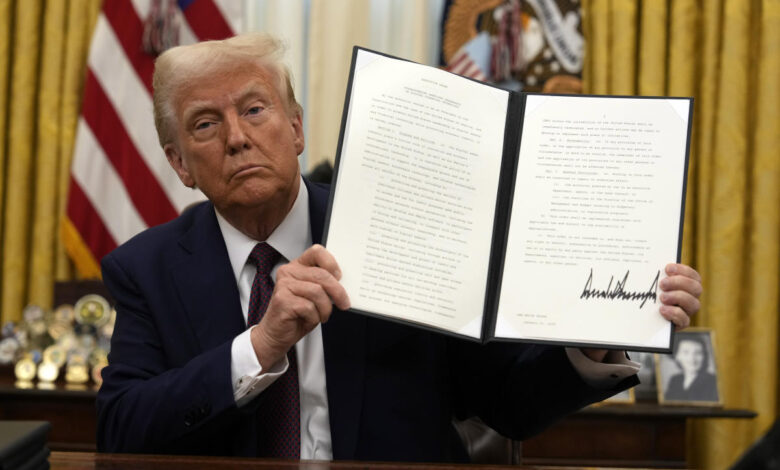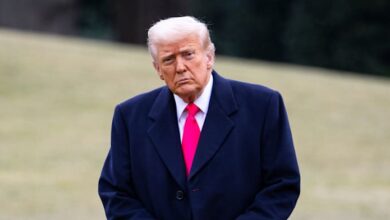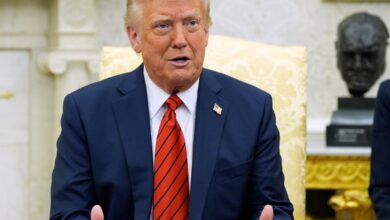US dollar retreats from 2-year high as Trump touts ‘tremendous’ tariff power, but holds off on swift action

The US dollar (DX=F, DX-Y.NYB) further retreated from near two-year highs on Friday, falling to a one-month low after President Trump said he would “rather not” impose tariffs on China.
“We have one very big power over China, and that’s tariffs, and they don’t want them,” Trump said in an interview with Fox News on Thursday. “And I’d rather not have to use it. But it’s a tremendous power over China.”
The US Dollar Index, which measures the dollar’s value relative to a basket of six foreign currencies — the euro, Japanese yen, British pound, Canadian dollar, Swedish krona, and Swiss franc — fell over 0.5% on Friday to cap off its worst week in over a year. The greenback saw its largest one-day drop since November 2023 earlier this week as the president refrained from enacting broad-based tariffs on his first day in office.
Still, the index has gained around 7% since its September lows and is up about 4% since Election Day.
The dollar’s price action has largely been driven by two main catalysts: Trump’s election and the subsequent Republican sweep, along with the recalibration of future Fed easing in the face of strong economic data.
But the unknown of Trump’s tariff policy has been the biggest driver in recent weeks and looks set to remain that way in the months ahead.
Despite recent moves to the downside, analysts at Bank of America argue it remains sensible for the market to continue to price in tariff risk when it comes to the dollar.
“Even if tariffs are delayed, they are likely to be a key policy pillar for the new administration,” wrote Adarsh Sinha, lead FX and rates strategist at BofA. “More importantly, uncertainty around the timing of tariff increases remains.”
Read more: What are tariffs, and how do they affect you?
Capital Economics, meanwhile, expects the dollar index to climb further this year, noting that, when adjusted for inflation, the greenback is at its strongest levels since the signing of the pro-growth international agreement, the Plaza Accord, in 1985.
“We think that US tariff policy and shifts in interest rates could push the dollar up further in the coming quarters,” Simon MacAdam, deputy chief global economist at Capital Economics, wrote on Friday.
Kyle Chapman, FX markets analyst at Ballinger Group, added the dollar “is incredibly sensitive to the tariff outlook right now.”
Trump declined to enact a tariff order during his first day in office, instead issuing a memorandum on Monday directing federal agencies to evaluate US trade policy.
https://s.yimg.com/ny/api/res/1.2/.JpQjH4xhXS6tMlsNxbLDQ–/YXBwaWQ9aGlnaGxhbmRlcjt3PTEyMDA7aD04MDA-/https://s.yimg.com/os/creatr-uploaded-images/2025-01/205ca260-da2d-11ef-adbf-c0aa385b38c0
2025-01-25 07:28:53




